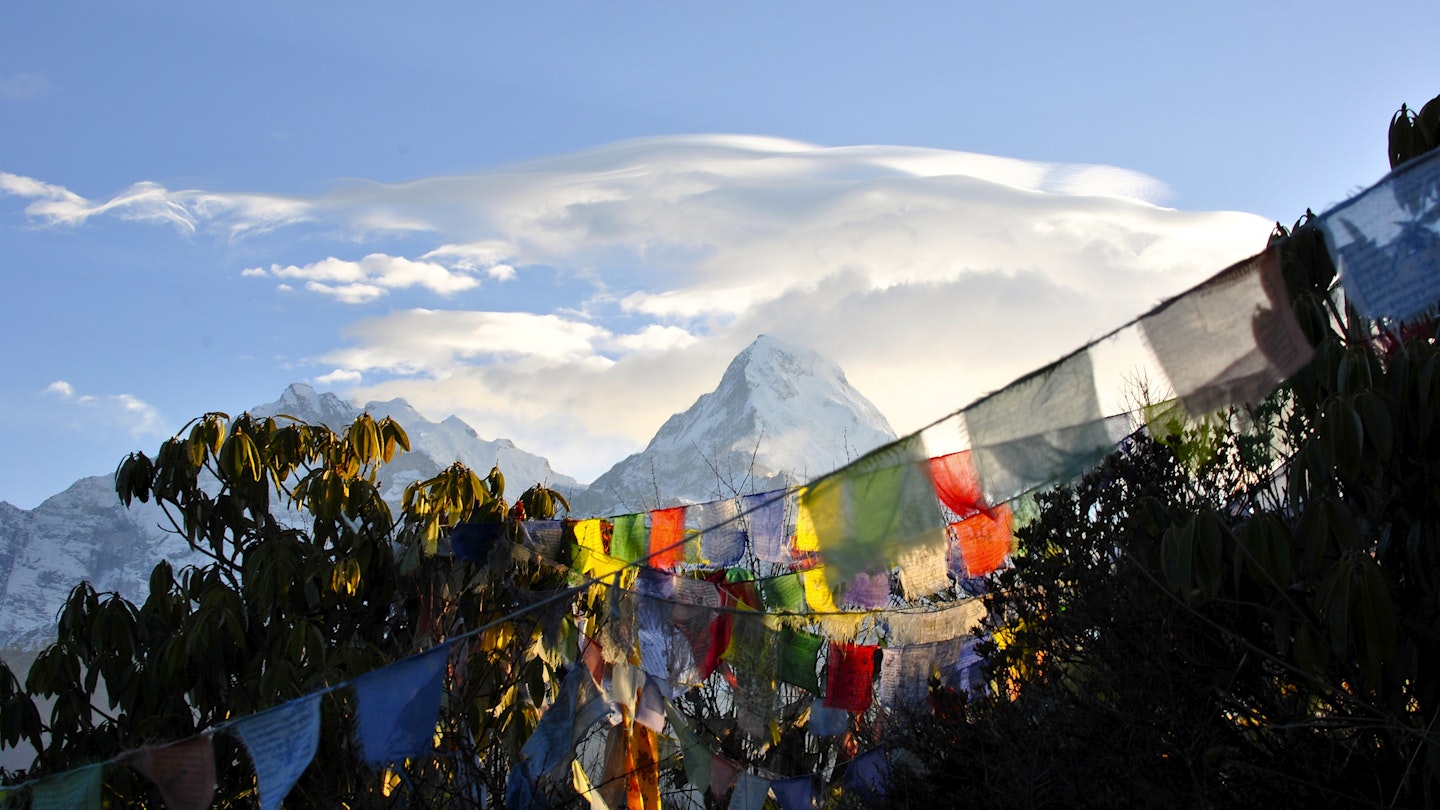Ever since Nepal first opened its borders to outsiders in the 1950s, this mystical mountain nation has proved irresistible to travellers, adventurers, and mountaineers. Today, legions of trekkers are drawn to the Himalayas’ most iconic and accessible hiking routes, following ancient caravan paths and the footsteps of early expeditioners to Everest, the Annapurnas, and beyond.

However, tourism can be a double-edged sword, and the seemingly miraculous economic gains come at the expense of increased environmental impacts. While there’s no denying that the standard of living in villages on Nepal’s main trekking circuits has improved immensely, the continual increase in visitors, coupled with an appetite for home comforts (hot showers, cold beer, internet, pizza, and apple pie), has produced spiraling competition for already scarce resources – threatening to destroy the very reason trekkers are there in the first place. Here are some considerations and suggestions for responsible trekking.
Choosing Your Trek
Before heading into the hills, it’s important to determine your style of trek. Are you comfortable walking independently with your own gear, or would you rather someone else handle the organization and heavy lifting? More importantly, do your choices contribute positively to the local economy or adversely affect the environment? Budget, comfort level, intended route, and environmental footprint should all influence your trekking decisions, whether you opt for independent hiking or a guided group trek.
Independent Trekking
The two most popular treks in Nepal – the Annapurna (aka “Apple Pie”) Circuit and the trek to Everest Base Camp (including Gokyo Lakes) – are well-trodden routes with plenty of tourist-friendly teahouses, making it easy for independent trekkers to rely on local facilities. By trekking independently, you can choose where to stay and who benefits from your spending, thereby making informed decisions based on each lodge’s sustainable practices. Additionally, independent trekking allows you to explore smaller villages often overlooked by larger groups. This approach helps distribute wealth more evenly and reduces localized environmental stress while also allowing for personal acclimatization at your own pace.

Group Treks
Organized camping treks, on the other hand, can access restricted areas that independent trekkers cannot visit, such as Humla and Inner Dolpo in western Nepal, as well as the breathtaking Manaslu Circuit (arguably Nepal’s most scenic trek). However, it’s crucial to examine the sustainability credentials of the agency you’re considering for your group trek. More reputable companies will publish their sustainability efforts online, and many donate a portion of their proceeds to community projects in villages along the route.
Hybrid Approaches
Even independent trekkers can hire a local guide and/or porter. A guide should be familiar with the route, communicate effectively, and arrange meals and accommodations, while a porter will carry your gear but might not speak your language or know the local customs. Many porters are subsistence farmers from the lowlands seeking better income opportunities. Occasionally, students may take on both roles. As a responsible trekker, it’s critical to ensure your guide or porter is adequately clothed and equipped for acclimatization and has proper medical insurance.
Kathmandu Environmental Education Project (KEEP) runs a clothing bank for porters in Thamel and welcomes donations of used gear.
International Porter Protection Group (IPPG) advocates for the rights of porters.

A guide is also mandatory for the sensitive Tibetan-influenced border regions of Upper Mustang and Nar Phu. Once the site of expensive large-scale mountaineering expeditions, both areas now feature a string of simple lodges, making an ‘alpine-style’ trek (where you carry your own gear) quite feasible. Visitor numbers and duration of stay are tightly controlled to mitigate cultural and environmental impacts, and permits for restricted areas are only issued to accredited trekking agencies (see www.taan.org.np).
Sustainable Trekking Tips
The Annapurna Conservation Area Project (ACAP) publishes a minimum impact code that integrates environmental behavior with cultural awareness. Many reputable trekking agencies adopt and expand upon this code. To summarize:
Avoid purchasing plastic bottled water. Instead, bring your own bottle and fill it with boiled water, tea, or hot lemon from your lodge. ACAP has multiple filling stations along the Annapurna Circuit where you can refill water bottles with UV-treated water for a minimal fee. Carry purifier drops or tablets as a backup.
Avoid burning wood for heat or cooking, as deforestation is rampant in Nepal. Always ensure that any hot showers provided are solar-powered.
Save valuable fuel by ordering the same meal as your trekking companions. Your guide will typically eat dhal bhat (the Nepali national dish of rice and lentils); you will receive warm smiles for ordering the same. Using pressure cookers is the most energy-efficient cooking method.
Take your trash home with you (e.g., spent batteries, broken electronics) and make use of recycling and compost bins where available. Minimize excess packaging.
Utilize a toilet whenever available.
Respect local cultures by dressing modestly, acting politely, and always seeking permission before taking photographs.
Avoid encouraging children to beg by indiscriminately giving out money, candy, or pens.
Show an active interest in the local culture by learning some words of Nepali, Sherpa, or Tibetan.

Trekking for a Cause
Adventure fundraising has gained popularity as a method to raise money for a specific charity by completing challenging tasks. This approach is commendable if you self-fund your entire trip while donating the full amount raised to the charity. Otherwise, consider why strangers should finance your vacation.
A less ethically troubling option is volunteering your time and skills within communities along your trekking route. The 2015 earthquakes severely impacted many community structures, particularly village schools, and some trekking companies offer opportunities to help rebuild these essential institutions in areas where government aid has defaulted.
World Expeditions provides Community Project treks, partnering with both Hillary’s Himalayan Trust and the Australian Himalayan Foundation.
CATreks is a UK not-for-profit trekking agency collaborating closely with Community Action Nepal (CAN) – established by Everest climber Doug Scott – to provide education and health services to remote mountain villages.





